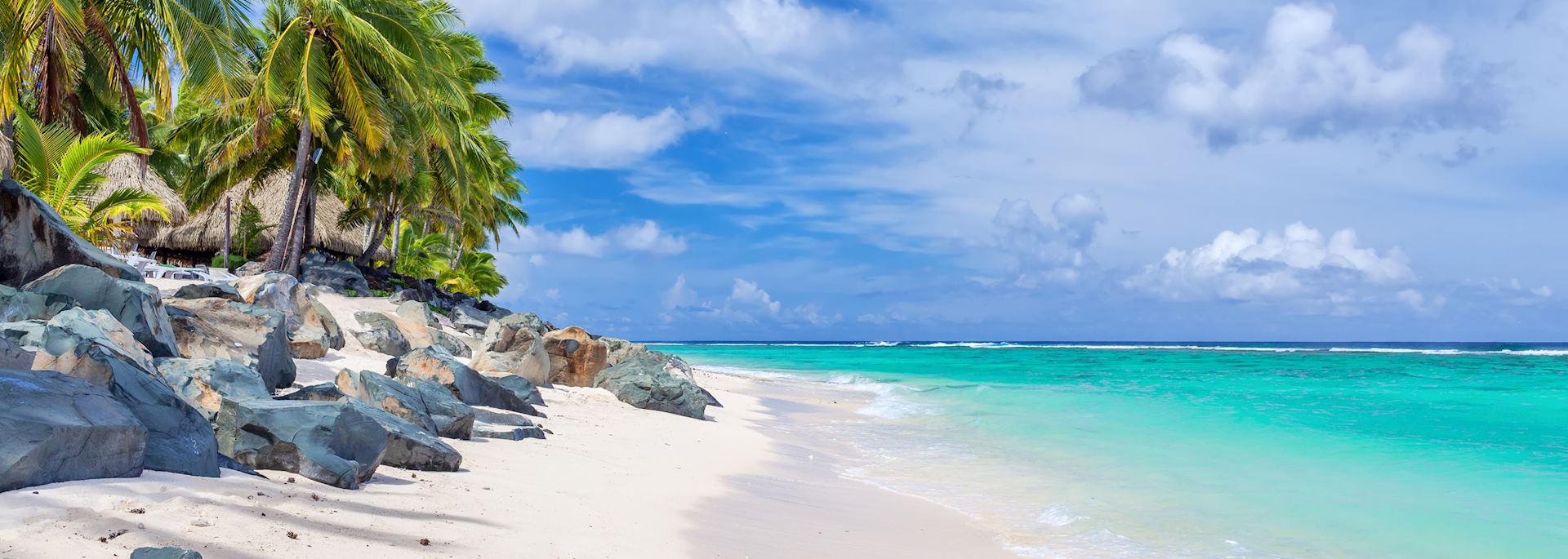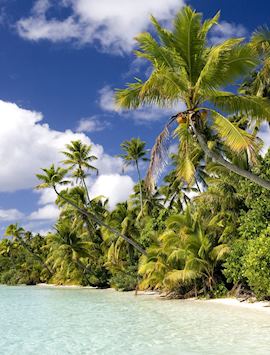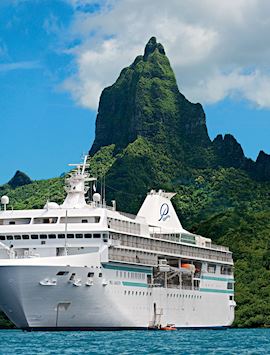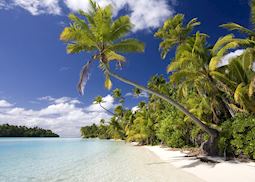The best time to visit the Cook Islands is during the driest months (April to November). The climate is tropical and generally agreeable year-round, with steady humidity levels and temperatures sitting between 24°C and 30°C.
December to March is the damp season, when there’s a greater chance of cloudy days and the occasional storm. In reality, this means it’s likely to rain hard for a couple of hours and then stop — so travel isn’t impossible at this time of year.
However, Rarotonga’s richly green, mountainous heart attests to the fact rainfall is possible all year round on the Cooks.
Month-by-month guide for traveling in the Cook Islands
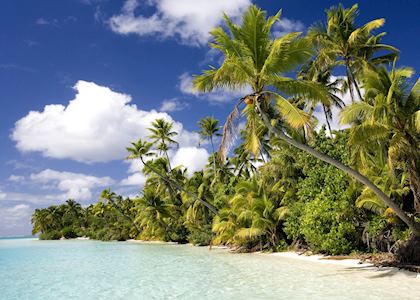
Visiting the Cook Islands in January - February
The middle of the Cook Islands’ summer, these months are not only the hottest but also the most prone to heavy rainfall, although continuous days of solid rain are rare. There’s also a (low) risk of cyclones.
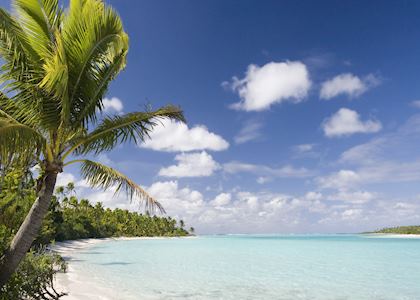
Visiting the Cook Islands in March - April
March sees the tail end of the Cooks’ rainy season. From April, the weather settles and the islands become pleasantly warm, the humidity occasionally punctured by the odd refreshing shower or sea breeze.
Events & Festivals
- Te Mare Ura, a festival of the Cook Islands’ traditional Mare Ura dance, takes place annually in Rarotonga between April and May.
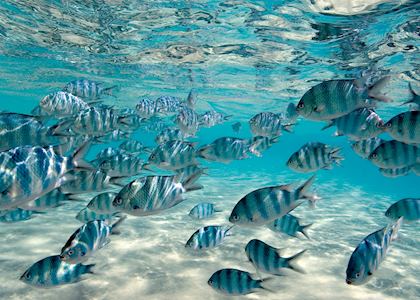
Visiting the Cook Islands in May - June
May and June see the islands becoming warmer still, and steadily busier as tourists from around the world (but especially the Southern Hemisphere) start to visit. Whale-watching season begins mid-June and runs until October. At these times of year, you can see humpbacks blowholing from the shore on the western side of Rarotonga.
Events & Festivals
- Te Mare Ura, a festival of the Cook Islands’ traditional Mare Ura dance, takes place annually in Rarotonga between April and May.
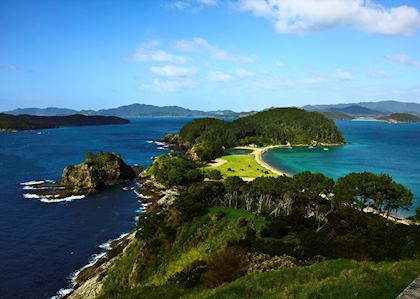
Visiting the Cook Islands in July - August
This is the middle of the Cooks’ winter. Daytime temperatures are warm, while the nights can be chilly. It’s also when the Cooks are at their busiest, as Australians and New Zealanders flock to the islands during their school winter breaks.
Events & Festivals
- Manureva Aquafest, a water sports festival showcasing some of the world’s best kitesurfers, comes to Aitutaki in late August.
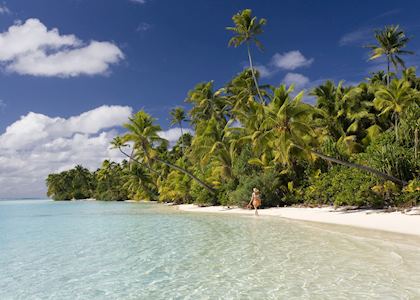
Visiting the Cook Islands in September - November
In September, the weather is still warm, but a thicker, soupier humidity returns to the islands by November. It’s still possible to see whales until mid-October, but we recommend avoiding the last week of September as this often coincides with spring break for New Zealanders.
Events & Festivals
- Mire Tiare, the Cooks’ flower festival, is celebrated on Rarotonga in late November.
- Vaka Eiva (a prestigious canoe-racing competition) also takes place in late November in Avarua.
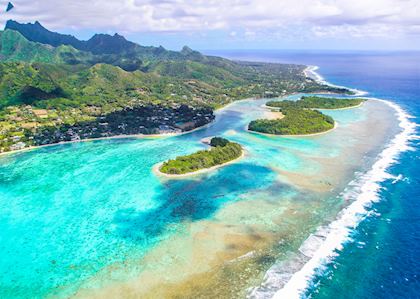
Visiting the Cook Islands in December
In December, the heat ramps up, more frequent rainfall envelops the Cooks, and there’s a greater chance of inclement weather and storms.
Cook Islands Climate Guide
| Destination | Jan | Feb | Mar | Apr | May | Jun | Jul | Aug | Sep | Oct | Nov | Dec |
|---|---|---|---|---|---|---|---|---|---|---|---|---|
| Aitutaki | 30°C 245mm | 30°C 237mm | 30°C 212mm | 30°C 219mm | 28°C 181mm | 28°C 93mm | 27°C 80mm | 25°C 90mm | 27°C 90mm | 28°C 123mm | 29°C 162mm | 29°C 227mm |
| Rarotonga | 28°C 249mm | 28°C 241mm | 28°C 216mm | 27°C 299mm | 25°C 211mm | 24°C 144mm | 24°C 126mm | 24°C 165mm | 25°C 163mm | 25°C 128mm | 26°C 190mm | 27°C 286mm |
Why travel with Audley?
- 100% tailor-made tours
- Fully protected travel
- Established for over 25 years
- 98% of our clients would recommend us
Travel advice
Practical tips for traveling to the Cook Islands, from social protocols to guidance on money matters, with a link to the latest Government of Canada travel advice.

Request our brochure
Covering all seven continents, The World Your Way shows you how you can see the world with us. It features trip ideas from our specialists alongside hand-picked stays and experiences, and introduces our approach to creating meaningful travel experiences.
Trip ideas and travel guides for exploring the Cook Islands
-
![Aerial view of Rarotonga]()
-
![Lagoon cruise, Aitutaki]()
-
![Paul Gauguin Cruise Ship at Bora Bora, Tahiti]()
-
Honeymoons in the Cook Islands ![Aitutaki, The Cook Islands]()
Honeymoons in the Cook Islands
Honeymoons in the Cook Islands
Read this guide

